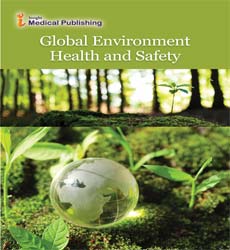Microbial ion Sequestration and Bioaccumulation: A promising Resolution to Heavy Metal Toxicity
Abstract
Pollution is known to causes disastrous effect to human health and ecosystem. In ecosystem, living organisms and non-living components of the environment are interlinked (Biotic and Abiotic) through cycles and energy flow. The contaminated water effluents from mines and metal refineries are effecting human and environment health. Heavy metal toxicity is recently found in drinking water, irrigation water, ground water and pond water. Heavy metals, such as Cd, Cr, Pb, Al, Hg, etc., are non-essential and have no physiological function, Known to be toxic even at very low concentrations. Heavy metal toxicity is known to induced oxidative stress through generation of reactive oxygen species. Removal of heavy metal ions are well established through ion exchange resins and is unsustainable non-renewable technology where as removal of heavy metal through bioaccumulation is an sustainable one. Biomass of microbial specifically yeast can be remove the heavy metal ions. Genetic Engineering Microorganisms help us to increase the uptake of heavy metal ions by using proteins to take and stabilizing charges of biomolecules, these has been studying over two decades for bioremediation. For these bioaccumulation will help for purification and refining, rather than disposal. Ion sequestration in vacuoles is a well known mechanism that has lead to bioaccumulation of heavy metal ions. The purifying strains such as E.coli BL21, E.coli JM109, Saccharomyces cerevisiae, Neurospora crassa are known to mitigated heavy metal stress.
Open Access Journals
- Aquaculture & Veterinary Science
- Chemistry & Chemical Sciences
- Clinical Sciences
- Engineering
- General Science
- Genetics & Molecular Biology
- Health Care & Nursing
- Immunology & Microbiology
- Materials Science
- Mathematics & Physics
- Medical Sciences
- Neurology & Psychiatry
- Oncology & Cancer Science
- Pharmaceutical Sciences
